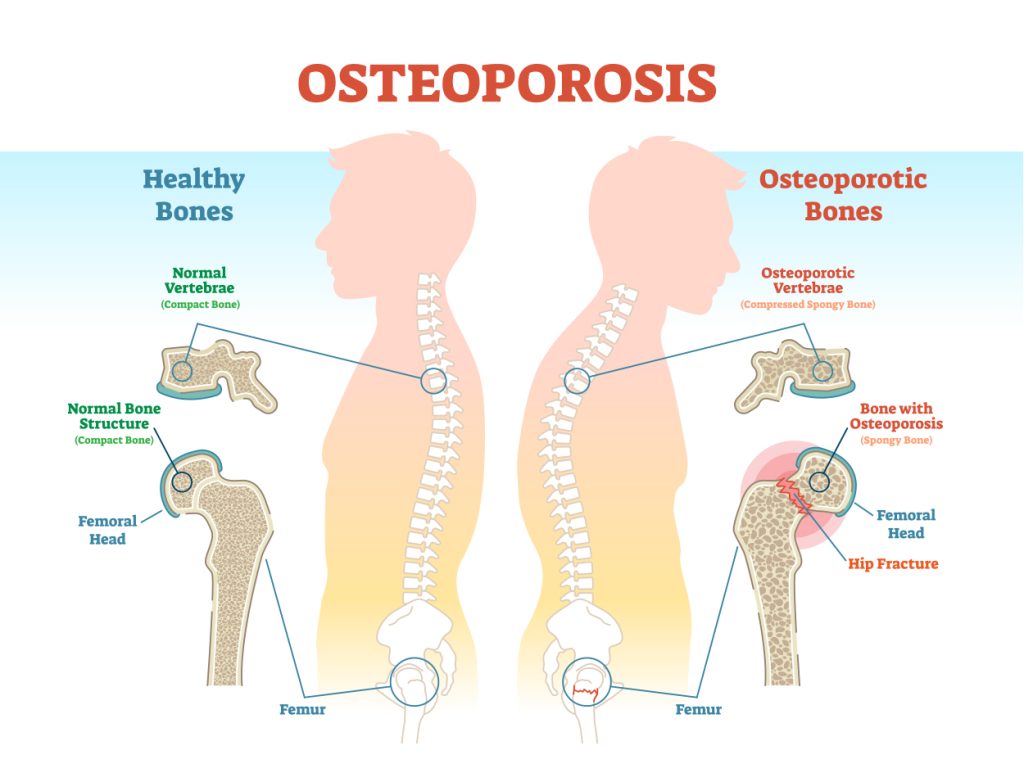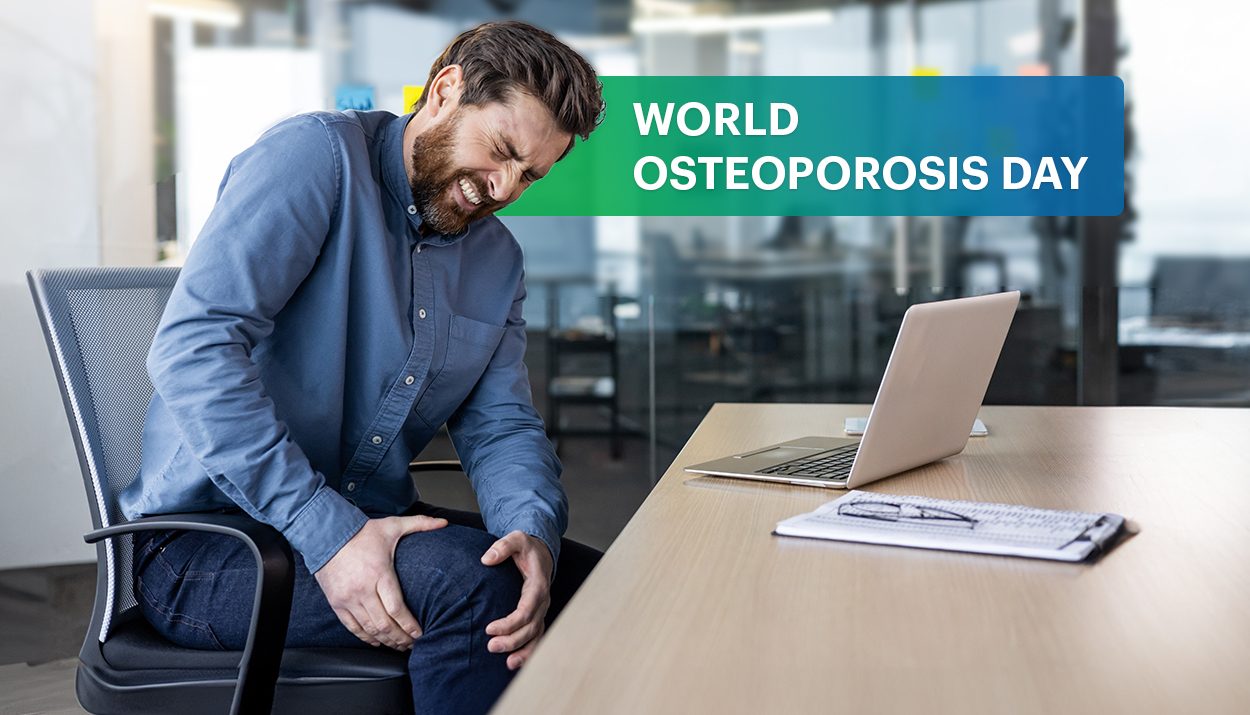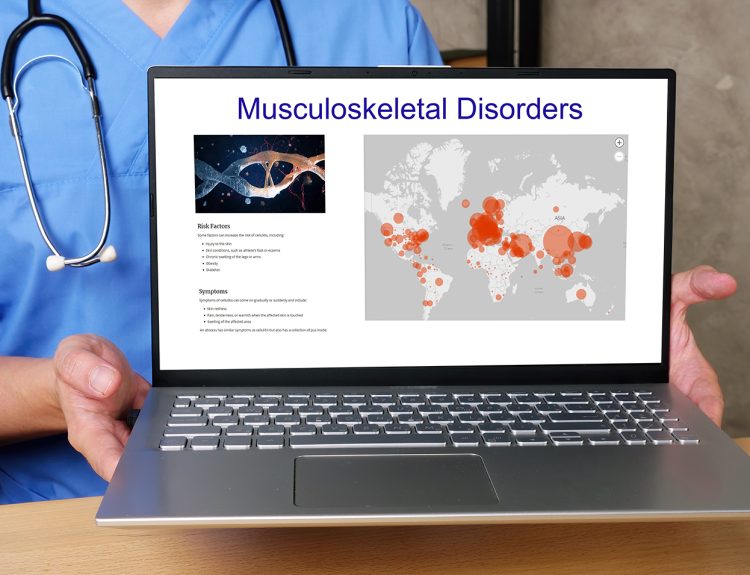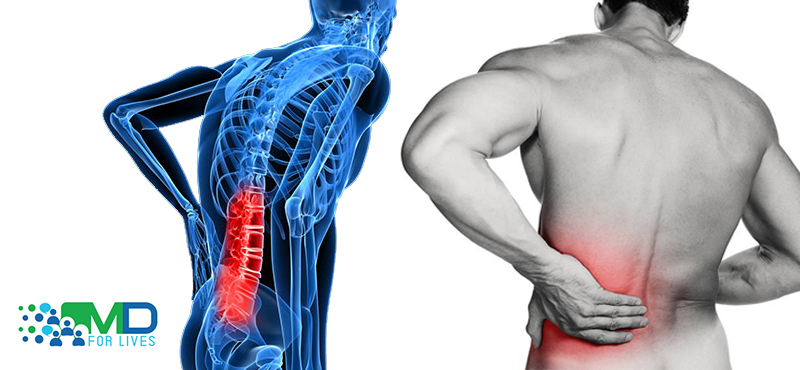When people hear the word “Osteoporosis,” they often associate it with women, particularly older women. It’s no wonder because, for decades, osteoporosis has been portrayed as a “women’s problem.” Yet, the reality is far more complex. Osteoporosis affects both men and women, and the consequences for men can be just as severe, if not more.
“While men’s bones are denser than women’s,
around 1 in 4 men over age 50 will suffer an osteoporotic fracture in their lifetime.”
– Bone Health & Osteoporosis Foundation
What’s even more alarming is that men are more likely to face severe complications, including a higher mortality rate following fractures (especially hip fractures). So then, why do so many men believe they are safe from osteoporosis? The answer lies in longstanding societal stigmas and misunderstandings about this bone-weakening disease.

As we celebrate World Osteoporosis Day, we must challenge this misconception and encourage men to take their bone health and Osteoporosis prevention seriously. By understanding the risks and learning how to prevent osteoporosis, men can protect themselves from debilitating fractures and maintain their quality of life as they age.
Through this blog, MDForLives attempts to break the stigma and explore why osteoporosis concerns everyone, including men. We have also listed out some suggestions for men for Osteoporosis prevention.
WHAT GAVE BIRTH TO THE MISCONCEPTION – “OSTEOPOROSIS IS A WOMEN’S PROBLEM”
The misconception that Osteoporosis is primarily a “women’s problem” has been shaped by several factors.
Historically, the condition has been associated with postmenopausal women, as they experience a rapid decline in estrogen – a hormone that protects bone density. This focus on women’s bone health has resulted in widespread awareness campaigns targeting female audiences, which has inadvertently reinforced the belief that men are less affected by the condition. Consequently, this misconception leads many men to underestimate their risk and neglect the importance of Osteoporosis prevention.
Moreover, much of the early Osteoporosis research centered on women, and media coverage often highlights women’s risk of fractures, leaving men out of the conversation. As a result, many men remain unaware of their vulnerability to Osteoporosis despite being at risk, especially as they age.
This gendered view has delayed Osteoporosis prevention and screening efforts for men, contributing to a false sense of security that leaves them prone to severe fractures and complications. Breaking this stigma is essential to ensure that men are equally informed and proactive about their bone health.
3 MAJOR FACTORS THAT HEIGHTEN OSTEOPOROSIS IN MEN
Osteoporosis can significantly increase the likelihood of fractures in men, and understanding the contributing factors is crucial for effective prevention.
The three primary factors that elevate Osteoporosis in men include:
- Aging: Just like women, men experience a natural decline in bone density as they age, leaving bones more fragile and prone to breakage.
- Lifestyle choices: Habits such as smoking, excessive alcohol consumption, and a sedentary lifestyle can significantly weaken bones over time, accelerating the onset of Osteoporosis in men.
- Chronic medical conditions: Health issues like hypogonadism (low testosterone), gastrointestinal disorders, and the long-term use of corticosteroids can hasten bone density loss, putting men at greater risk of Osteoporosis and related fractures.
MEN’S OSTEOPOROSIS PREVENTION: SIMPLE STRATEGIES FOR STRONGER BONES
Fortunately, Osteoporosis is not a fate set in stone for anyone. Men, in particular, have the power to take control of their bone health through a few simple yet effective steps. By adopting proactive measures, men can significantly reduce their risk of developing osteoporosis and the potentially debilitating fractures that accompany it.
Here are some strategies that can help them with Osteoporosis prevention:
- Get screened: For men over 50, being proactive about bone health is crucial, especially if they have risk factors for osteoporosis.
Regular bone density screenings (DEXA scans) can help detect bone loss early. If you have a family history of osteoporosis or conditions like low testosterone, discussing osteoporosis screening in men with your orthopedic can be a game changer.
Early osteoporosis screening in men enables timely intervention, essential for maintaining strong bones.
- Eat a bone-healthy diet: Nutrition is foundational for solid bones. Men should focus on a balanced diet rich in calcium and vitamin D – two critical nutrients for Osteoporosis prevention.
Dairy products like milk and yogurt, leafy greens like kale and broccoli, and fortified foods like cereals and orange juice are excellent sources. Incorporating various foods into daily meals can help ensure adequate nutrient intake and support optimal bone density for Osteoporosis prevention.
- Exercise regularly: Regular physical activity is another cornerstone of bone health.
Weight-bearing and resistance exercises, including walking, lifting weights, and even yoga, are practical in maintaining and improving bone strength. These activities stimulate bone formation and can help slow down the natural loss of bone density with age.
Aim for at least 30 minutes of moderate exercise most days of the week to reap the benefits.
- Adopt healthy lifestyle habits: Lifestyle choices significantly affect bone health and help in Osteoporosis prevention.
Quitting smoking and reducing alcohol consumption can have a profound impact on bone density. Additionally, managing chronic health conditions, such as diabetes or hyperthyroidism, is essential for overall health and can contribute to better bone strength.
By making these positive lifestyle changes, men can significantly lower their risk of bone loss and enhance their overall well-being.
SPREAD THE MESSAGE, BREAK THE STIGMA!
To truly break the stigma surrounding osteoporosis, we must start by spreading the message that this condition also impacts men.
Many men remain unaware of their vulnerability to Osteoporosis, often assuming it is a women’s issue. However, by educating themselves and others about the risks associated with this disease and Osteoporosis prevention measures, men can significantly decrease their likelihood of experiencing debilitating ‘Osteoporotic Fractures.’
This World Osteoporosis Day, let’s shift the conversation to ‘Osteoporosis affects everyone.’ Men must be just as proactive about their bone health as women. Together, we can challenge the perception that osteoporosis only affects women and empower men to prioritize their bone health before it’s too late.
Help us break the stigma! Share this blog to raise awareness about osteoporosis in men, and consider joining MDForLives to make a meaningful difference in healthcare. Once you are a part of our community, you can take unlimited patient surveys and receive attractive rewards in return!
Your involvement can contribute to vital research that enhances understanding and prevention of osteoporosis and other deadly diseases.
REFERENCES:
- New evidence-based guideline for the management of osteoporosis in men
www.osteoporosis.foundation - Osteoporosis in men is a serious condition
www.bonehealthandosteoporosis.org

The creative force behind the keyboard, Pallabi crafts narratives of healthcare wonders and research marvels. As a seasoned professional blogger, she ventures to unearth the riches of medical innovation, weaving them into insightful stories that educate.






